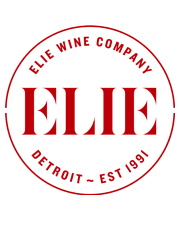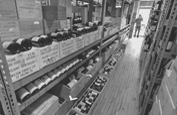Aperitivo Cappelletti
$19.99 – SOLD OUT
Known locally as “Specialino,” the Aperitivo Cappelletti may be the oldest style of classic red bitter still in production. Made from a traditional wine base of predominately Trebbiano, Cappelletti is less sweet than its larger commercial rivals and has a delightfully dry finish with bitter citrus undertones perfect for mixing with sparkling wine. It still uses natural Carmine (Cochineal) for color, long prized in garments, food and drink. This beautifully deep crimson red is a great source of pride (and wealth) for the region.
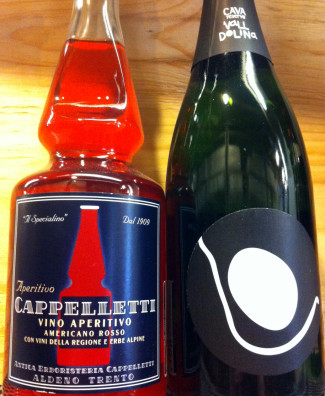 The “Spritz” – a drink combination of red bitter with sparkling wine and a slice of orange, shares a history with Cappelletti in the Triveneto. Legend has it that the Emperor Franz Ferdinand had enjoyed the bitter and sour notes when combining citrus with certain wines. During WWI, soldiers of the Austrian Empire would order the Spritz to add depth to the local bubbly. Although locals would counter that the Austrians could not handle the local bitter aperitivi without some dilution.
The “Spritz” – a drink combination of red bitter with sparkling wine and a slice of orange, shares a history with Cappelletti in the Triveneto. Legend has it that the Emperor Franz Ferdinand had enjoyed the bitter and sour notes when combining citrus with certain wines. During WWI, soldiers of the Austrian Empire would order the Spritz to add depth to the local bubbly. Although locals would counter that the Austrians could not handle the local bitter aperitivi without some dilution.
Try it mixed with Cava VallDolina ($18.99) for a refreshing start to your next dinner party or while hanging out and watching old Fellini movies.
- - -
Posted on 2014.02.21 in Aperitivi, Italy | Read more...
Quality and Value from Burgundy at Close-out Prices
Price: $33/bottle or special six-pack discount of $179 SOLD OUT
We’ve uncovered a very limited amount of 2011 Domaine Tupinier-Bautista Mercurey Vieilles Vignes (~375 cases annual production) and 2011 Domaine Tupinier-Bautista Mercurey Premier Cru Les Vellées (~130 cases annual production) and are offering them at close-out prices.
These wines cover both the quality and value aspects of Côte Chalonnaise as well as underscore the particulars of the vintage. The fruit for both wines is grown in clay and limestone, hand-harvested and hand-sorted before a 15 day tank vinification and 12 months of aging in oak barrels. Both show pretty cherry fruit and firm acidity on top a backbone of fine tannins. The main difference between the two is a slight increase in concentration and wood tannins in the Premier Cru, as one would expect given the choicer real estate.
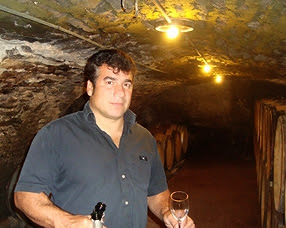 The Tupinier family has been growing fruit in the vineyards of Mercurey since 1770. In 1997, Spanish-born Manu Bautista succeeded his stepfather, Jacques Tupinier, to continue producing Burgundy using traditional methods but with the spirit of a new generation.
The Tupinier family has been growing fruit in the vineyards of Mercurey since 1770. In 1997, Spanish-born Manu Bautista succeeded his stepfather, Jacques Tupinier, to continue producing Burgundy using traditional methods but with the spirit of a new generation.
The Côte-d’Or gets the honor of being the most significant region in Burgundy for good reason. But with prices rising due to a string of low-yielding vintages and high demand, Burgundy enthusiasts are wise to diversify their consumption to cover the entire region (including Beaujolais, but we’ll talk about that in another email).
Wines from Côte Chalonnaise are considered more rustic than those from their northern neighbors in the Côte d’Or, yet their early drinkability and generally lower prices make them extremely useful. Mercurey is, by far, the most important appellation in Côte Chalonnaise. And the consistency of the wines produced in Mercurey make them a good bet even in off years.
Not that 2011 is an off year. While not quite on the level of 2009, 2011 still ranks among the best vintages in Burgundy of the last decade. Most winemakers call it a “nice surprise”, producing red wines that have developed extra structure in barrel. The distinction of the 2011 is early-picked grapes yielding ripe, but not over-ripe flavors, for wines full of charm and mellow fruit. These are wines to drink and enjoy relatively young in most cases, with supple tannins and moderate concentration.
We suggest purchasing a six pack of each wine and drinking one or two Vieilles Vignes a year until gone and then starting in on the Les Vellées Premier Cru. Although both wines will also reward the impatient drinker, especially if there is a roast duck in the mix.
- - -
Posted on 2014.02.05 in Burgundy | Read more...
More Deep Discounts on Uncommon Wine and A Spanish Saturday Sips
The build-out at our new location is progressing rapidly and we are eager to open the doors to an improved version of Elie Wine Company. But don’t fret, even with the shiny new location we’re going to maintain that cozy atmosphere and personal experience you’ve come to know.
We’re still digging deep into our inventory to offer wines, some at over 50% off, that we just don’t want to move from Royal Oak to Birmingham.
Frankly, we couldn’t be more pleased with how the close-out wines are drinking. This past Saturday we opened a 1996 Domaine Chatelain Pouilly-Fumé Prestige that was as alive as any Sauvignon Blanc we’ve ever tasted, with aromas of chamomile and hot stones, and a razor-sharp finish. We also have some great deals on bottles from the Languedoc-Roussillon region of southern France that are hitting their prime drinking window right now, and all full of dark fruits. There’s nothing like a warm climate Mediterranean red wine to help ease the pain of sub-zero temperatures.
These close-out wines aren’t some random bottles forgotten in a storage room — we don’t even have a storage room. One of the many aspects that set Elie Wine Co. apart is that we hold onto wines that we know will develop with some age. You won’t come across many wine shops where you can find a properly stored wine that was kept in its original container since its arrival in the U.S.
And that point segues perfectly into our next Saturday Sips. We’ll be sampling two ambitious Spanish wines that were purchased on release and that we just pulled from their crates. 2005 Clos Figueres Priorat is a highly-rated Garnatxa, Carinyena, Syrah, and Mourvedre blend from northeastern Spain that should be drinking ideally now but will also develop in the cellar through the next decade. 2003 6 Vinyes de Laurona is from D.O. Montsant, which almost completely surrounds Priorat, and makes the argument that Monsant wines can be just as powerful as those from Priorat. This small production blend of old vine Garnatxa and Carinyena is still brimming with fruit and the structure to back it up.
- - -
Posted on 2014.01.22 in Saturday Sips Wines, Priorat DOQ, Montsant | Read more...
The Rare and Obscure Fruit Liqueurs of Laurent Cazottes
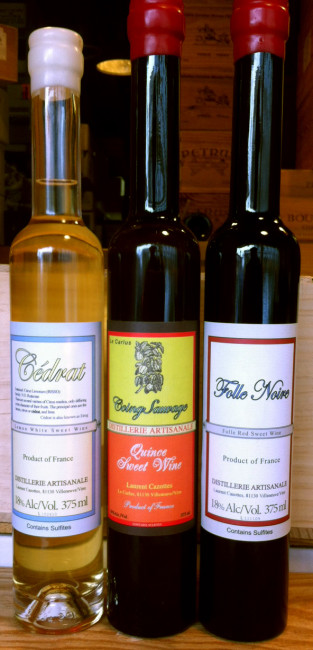
$69/bottle – SOLD OUT
We just received a handful of Wild Quince, Citron, and Folle Noire sweet liqueurs from the tiny production distillery run by rock star distiller Laurent Cazottes. He is France’s leading producer of artisan liqueurs and eau-de-vie. Whether it’s grapes, greengage plums, quinces or pears, each fruit is painstakingly pampered by hand. Cazottes retains only the “noble” parts of the fruit – the skin and flesh; stalks, calyxes, pips, stones or scabs are taken out manually to keep the pure concentration and aroma of the fruit intact. Today, Michel Bras (of Michelin three star Restaurant Bras) orders his citron liqueur exclusively from him and the national forests office of France has assigned to him personally the wild blueberries from Mont Lozère.
- - -
Posted on 2013.12.23 in France, French Rarities | Read more...
An Outstanding Second Wine from Château Montrose (Saint-Estèphe)
$64 per bottle or special 6-pack discount for $360 SOLD OUT
This time of year might find you spending some time sledding down a hill, hitting the pond for a little ice skating, or even just shoveling the snow off your driveway. There’s nothing quite like returning to a warm house after spending a little time in the cold, all ruddy-cheeked and primed for a beverage.
Hot chocolate is okay. Or plan ahead and have a hot beef roast and a bottle of Bordeaux waiting for you after coming in from the cold.
2010 was a stellar year in Saint-Estèphe and produced wines of exceptional balance. It was particularly dry and relatively hot with climate characteristics similar to the great Bordeaux vintages of 1929, 1945, 1947, 1959, 1961, and 1989. These are wines that will develop in the cellar for decades yet because the wines of Saint-Estèphe generally have a slightly higher percentage of Merlot in the blend, the hard, tannic edge of the Cabernet Sauvignon is somewhat mitigated in their youth. Point being – we wouldn’t chastise you for opening a bottle before 2030. We’ve certainly consumed a goodly share of 2010 Bordeaux ourselves already.
Stop by the shop this Saturday for a taste of 2010 La Dame de Montrose, the second label of the second growth classified estate of Château Montrose. Château Montrose is a 95-hectare vineyard in one single block, unusual in the Medoc. Its name derives from the pink hue of the flowering heather covering the hillside near its location on gentle slopes of well-exposed gravel next to the Gironde, a vast body of water that helps regulate the impact of frost and blazing summer heat on the vineyard.
2010 La Dame de Montrose represents 36% of the production of Château Montrose and is a blend of 64% Cabernet Sauvignon and 36% Merlot. The fruit is hand-picked and sorted both in the vineyard and in the cellar. A famous wine pundit you’ve probably heard of is close to awarding Château Montrose’s first label wine a perfect score for the 2010 vintage, thus putting it out of reach of most drinkers. But you can still enjoy their second label, made with the same standards as the first label but ready for drinking a bit earlier.
We’ll also uncork one or two other wines from the 2010 vintage of Saint-Estèphe for comparison.
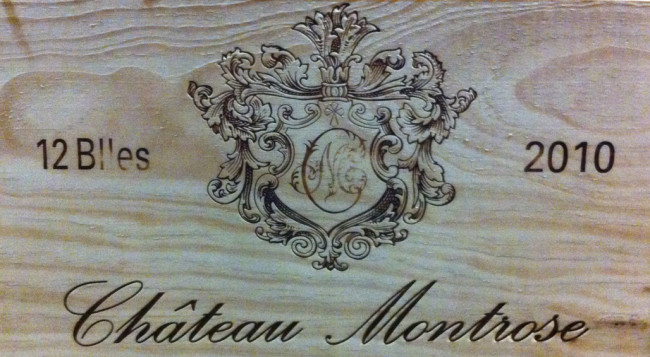
We will be open this Sunday from 12-5pm to take care of your last minute holiday wine needs.
Cheers!
- - -
Posted on 2013.12.20 in France, Bordeaux, Saturday Sips Wines | Read more...
Featured Wines
- Notebook: A’Boudt Town
- Saturday Sips Wines
- Saturday Sips Review Club
- The Champagne Society
- Wine-Aid Packages
Wine Regions
Grape Varieties
Aglianico, Albarín Blanco, Albillo, Aleatico, Alicante Bouschet, Aligote, Altesse, Arcos, Aubun, Auxerrois, barbera, Beaune, Bonarda, Cabernet Franc, Cabernet Sauvignon, Caino, Caladoc, Carignan, Chablis, Chardonnay, Chasselas, Chenin Blanc, Cinsault, Cortese, Corvina, Corvinone, Cot, Dolcetto, Ferrol, Fiano, folle Blanche, Frappato, Friulano, Fromenteau, Fumin, Gamay, Garganega, Garnacha, Gewurztraminer, Godello, Grenache, Grenache Blanc, Grolleau, Jacquère, Lambrusco, Lladoner Pelut, Loureira, Macabou, Maconnais, Malvasia, Malvasia Nera, manseng, Melon de Bourgogne, Mencía, Merlot, Mondeuse, Montanaccia, Montepulciano, Montònega, Morescola, Morescono, Mourv, Mourvèdre, Muscadelle, Nebbiolo, Nero d'Avola, Niellucciu, Palomino, Parellada, Pecorino, Persan, Petit Verdot, Pinot Auxerrois, Pinot Noir, Pouilly Fuisse, Poulsard, Prieto Picudo, Rondinella, Rose, Roussanne, Sagrantino, Sangiovese, Sauvignon, Sauvignon Blanc, Savignin, Souson, Sparkling, Sylvaner, Syrah, Tannat, Teroldego, Timorasso, Trebbiano, Treixadura, trepat, Trousseau, vaccarèse, Verdicchio, Viognier, ViuraWines & Events by Date
- September 2025
- August 2025
- July 2025
- June 2025
- May 2025
- April 2025
- March 2025
- February 2025
- January 2025
- December 2024
- November 2024
- October 2024
- September 2024
- August 2024
- July 2024
- June 2024
- May 2024
- April 2024
- March 2024
- February 2024
- January 2024
- December 2023
- November 2023
- October 2023
- September 2023
- August 2023
- July 2023
- June 2023
- May 2023
- April 2023
- March 2023
- February 2023
- January 2023
- December 2022
- November 2022
- October 2022
- September 2022
- August 2022
- July 2022
- June 2022
- May 2022
- April 2022
- March 2022
- February 2022
- January 2022
- December 2021
- November 2021
- October 2021
- September 2021
- August 2021
- July 2021
- June 2021
- May 2021
- April 2021
- March 2021
- February 2021
- January 2021
- December 2020
- November 2020
- October 2020
- September 2020
- August 2020
- July 2020
- June 2020
- May 2020
- April 2020
- March 2020
- February 2020
- January 2020
- December 2019
- November 2019
- October 2019
- September 2019
- August 2019
- July 2019
- June 2019
- May 2019
- April 2019
- March 2019
- February 2019
- January 2019
- December 2018
- November 2018
- October 2018
- September 2018
- August 2018
- July 2018
- June 2018
- May 2018
- April 2018
- March 2018
- February 2018
- January 2018
- December 2017
- November 2017
- October 2017
- September 2017
- August 2017
- July 2017
- June 2017
- May 2017
- April 2017
- March 2017
- February 2017
- January 2017
- December 2016
- November 2016
- October 2016
- September 2016
- August 2016
- July 2016
- June 2016
- May 2016
- April 2016
- March 2016
- February 2016
- January 2016
- December 2015
- November 2015
- October 2015
- September 2015
- August 2015
- July 2015
- June 2015
- May 2015
- April 2015
- March 2015
- February 2015
- January 2015
- December 2014
- November 2014
- October 2014
- September 2014
- August 2014
- July 2014
- June 2014
- April 2014
- March 2014
- February 2014
- January 2014
- December 2013
- November 2013
- October 2013
- September 2013
- August 2013
- July 2013
- June 2013
- May 2013
- April 2013
- March 2013
- February 2013
- January 2013
- December 2012
- November 2012
- October 2012

